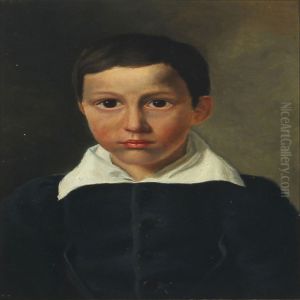Peter Henrik Gemzoe Paintings
Peter Henrik Gemzoe was a Danish painter born on July 24, 1821, in Copenhagen, Denmark. He is not widely known in the annals of art history, and as such, there are limited records and acknowledgments of his work in comparison to some of his contemporaries. Despite this, Gemzoe made contributions to the Danish art scene of the 19th century, primarily as a portrait painter.
Gemzoe's artistic education began at the Royal Danish Academy of Fine Arts in Copenhagen, where many Danish artists of the time received their formal training. At the Academy, he would have been exposed to the teachings of prominent Danish artists and would have studied the Neoclassical principles that were prevalent during the early 19th century. He pursued his interest in portraiture, which during this period, was a prestigious genre due to the demand for portraits by the bourgeoisie and the aristocracy, who wanted to document their status and appearance.
Throughout his career, Gemzoe exhibited his works at the Charlottenborg Spring Exhibition, a significant venue for artists of the time to display their work. These exhibitions were central to the art scene in Denmark and provided artists with the opportunity to gain recognition and sell their artwork. He worked during a period that saw the transition from Neoclassicism to Romanticism and later to Realism within Danish art. However, Gemzoe's work remained relatively conservative, and he did not venture far into the emerging styles of his time.
Peter Henrik Gemzoe's paintings were characterized by their detailed representation of the human figure and a clear attention to facial expressions, attire, and the social status of his sitters. His portraits are now part of Danish cultural heritage, with some pieces potentially displayed in local museums or held in private collections. Gemzoe's artistic legacy is modest, and while he may not have achieved the fame of some of his peers, his work provides a glimpse into the faces and fashions of 19th-century Denmark.
Gemzoe lived through an era of significant change in Denmark, including the shift towards modernity and the impact of various political upheavals that influenced Danish society and culture. He passed away on August 29, 1902, in Frederiksberg, leaving behind a body of work that, although not widely celebrated, contributes to the understanding of Danish portraiture and the broader European artistic context of the time.
